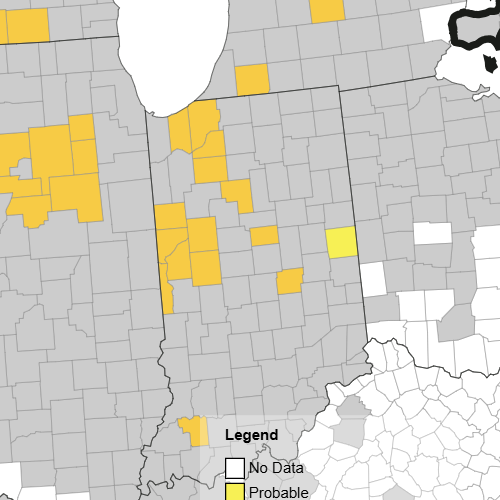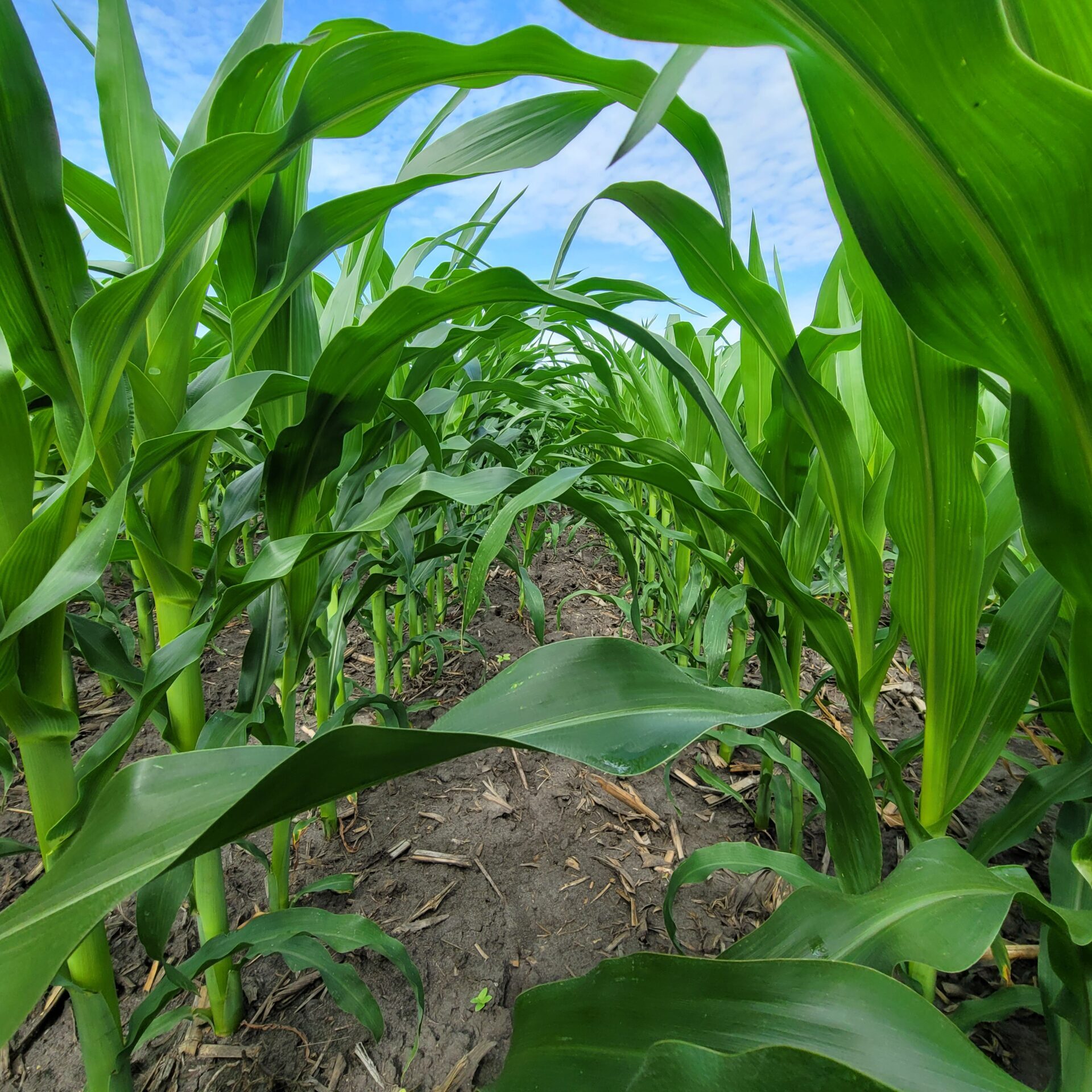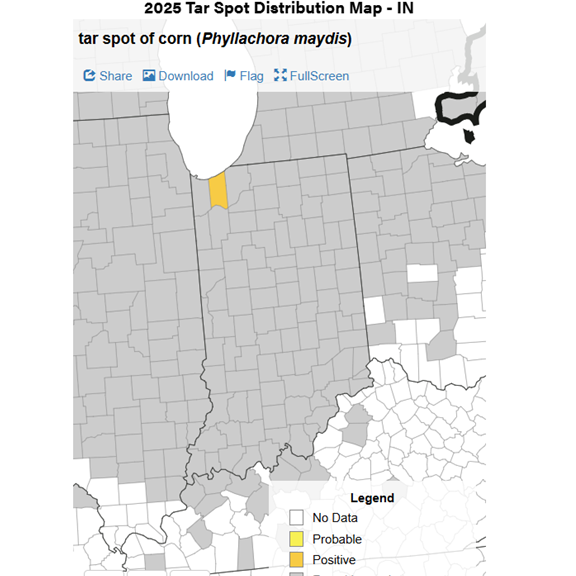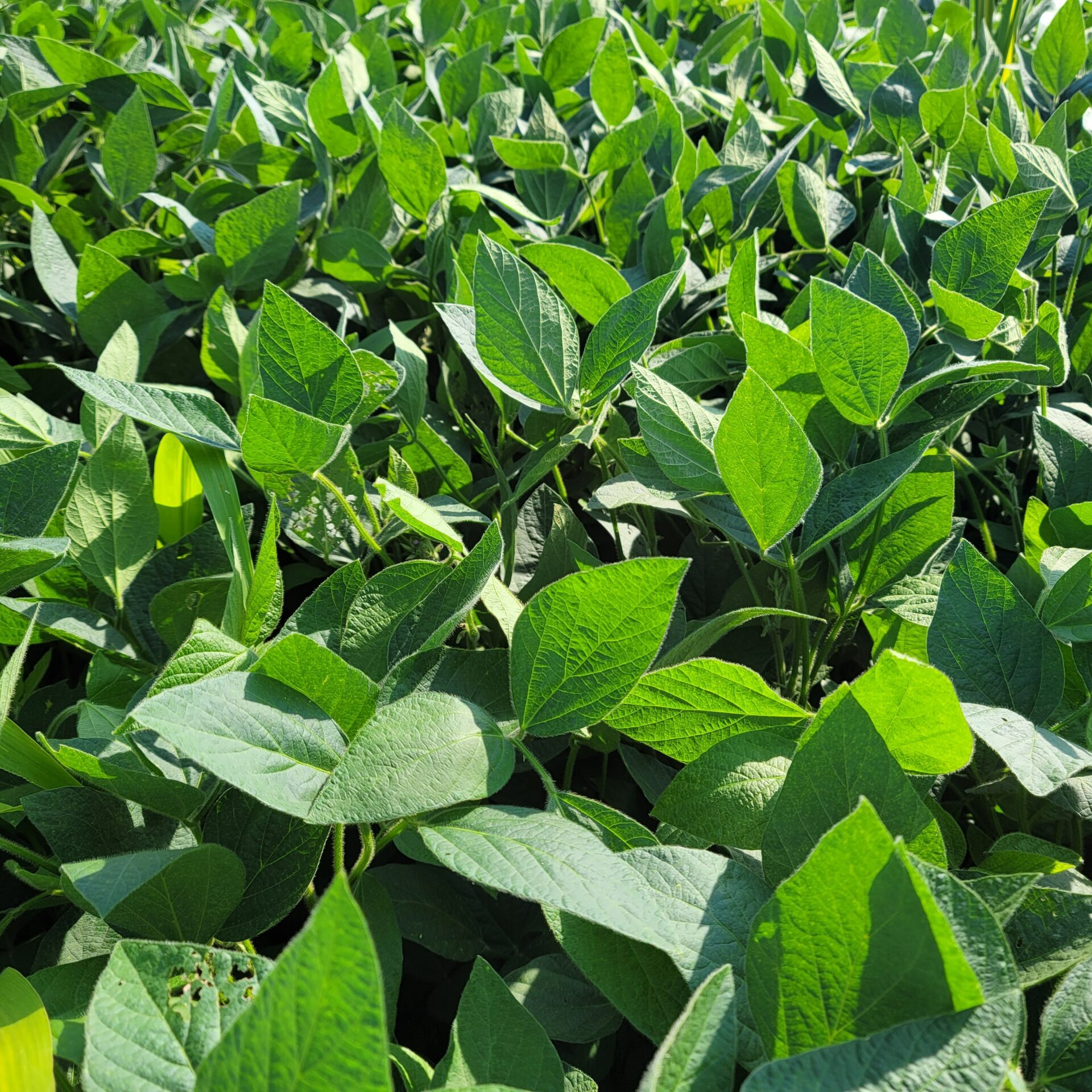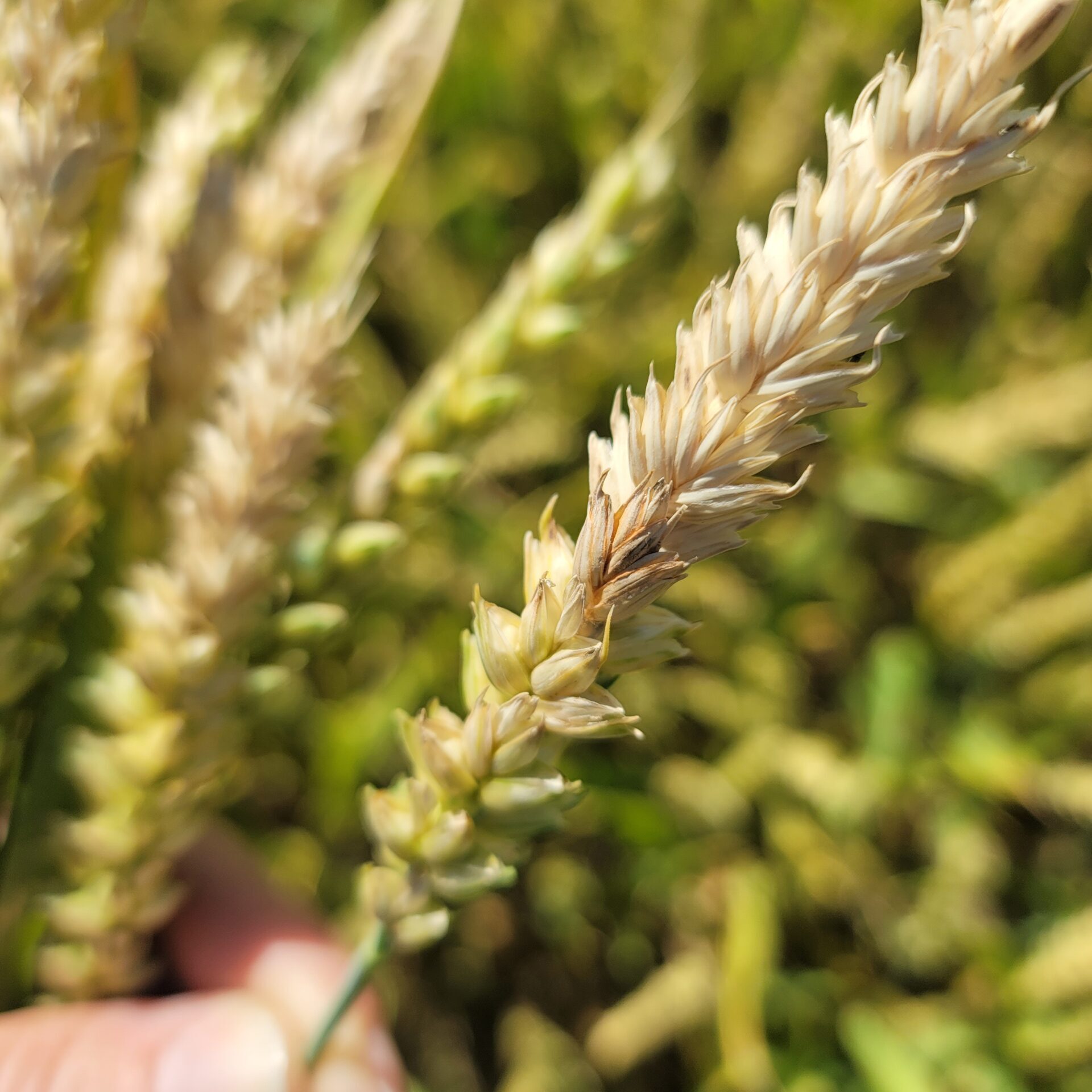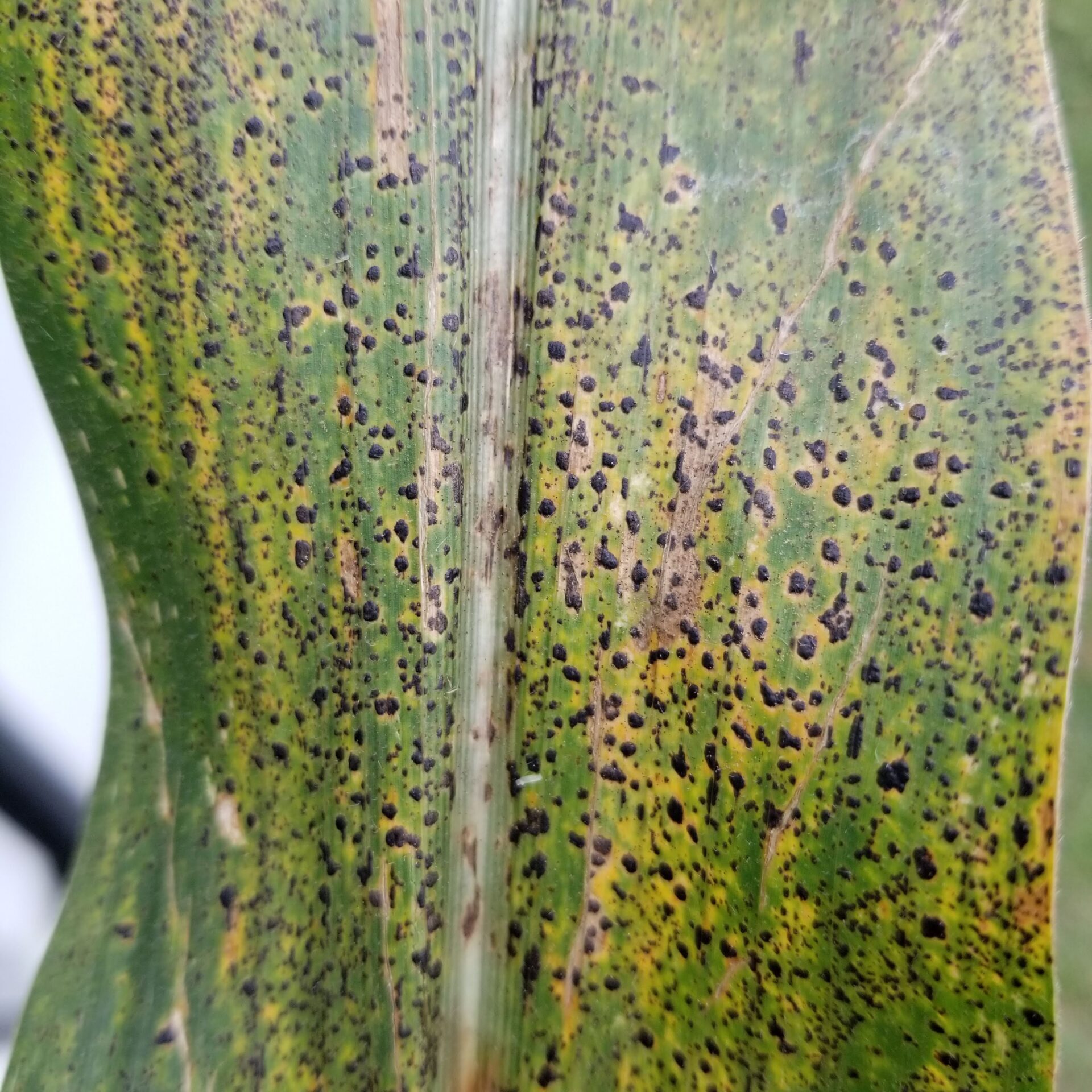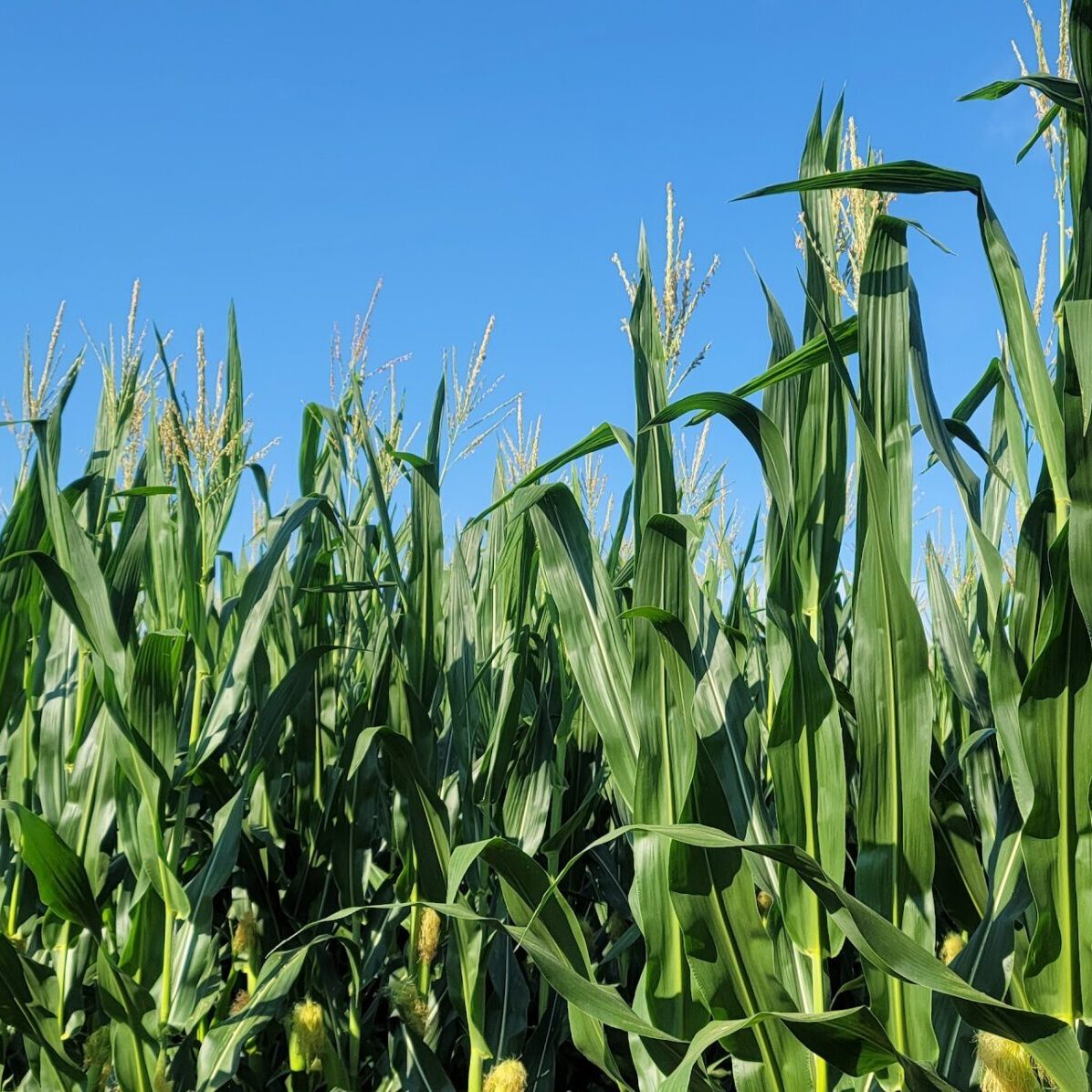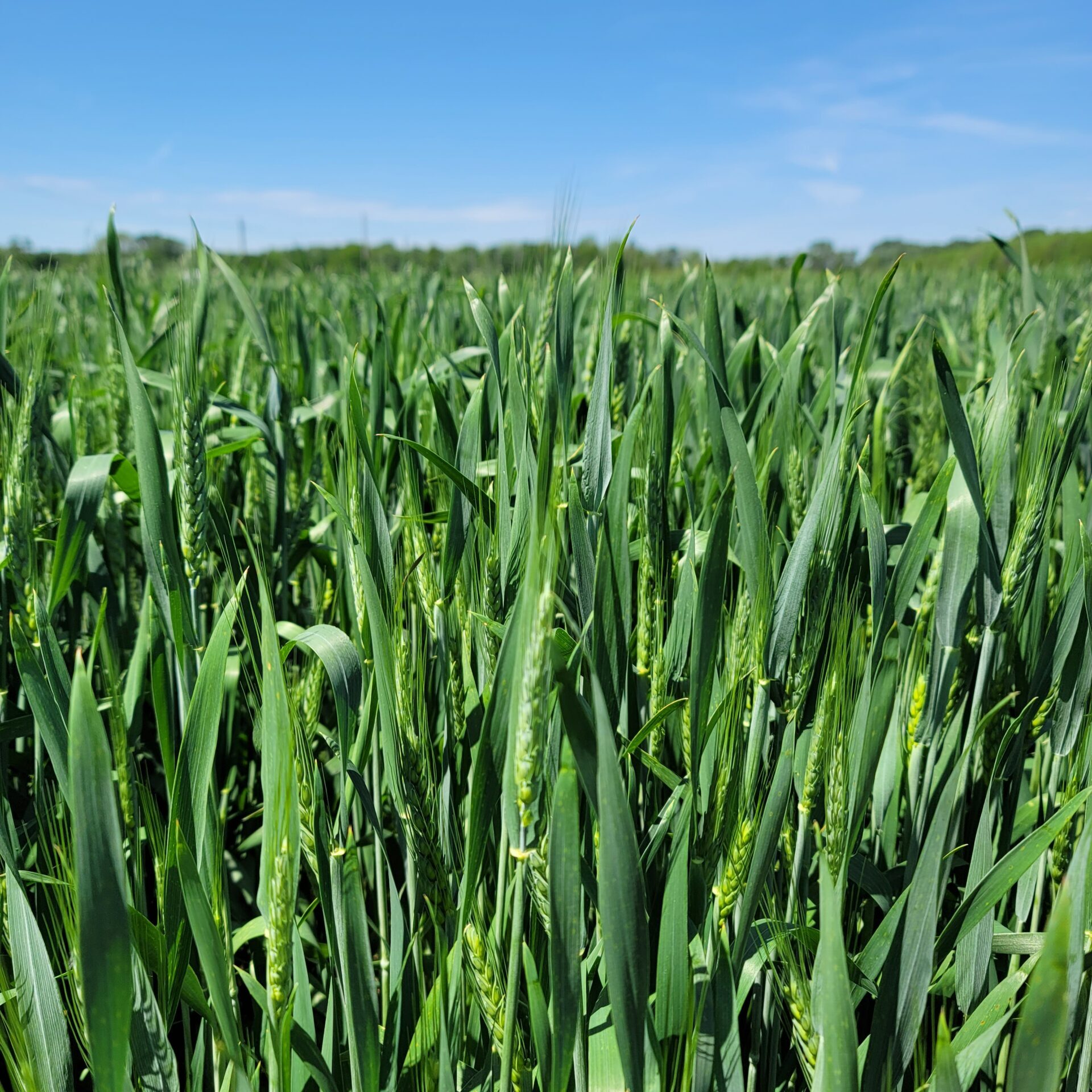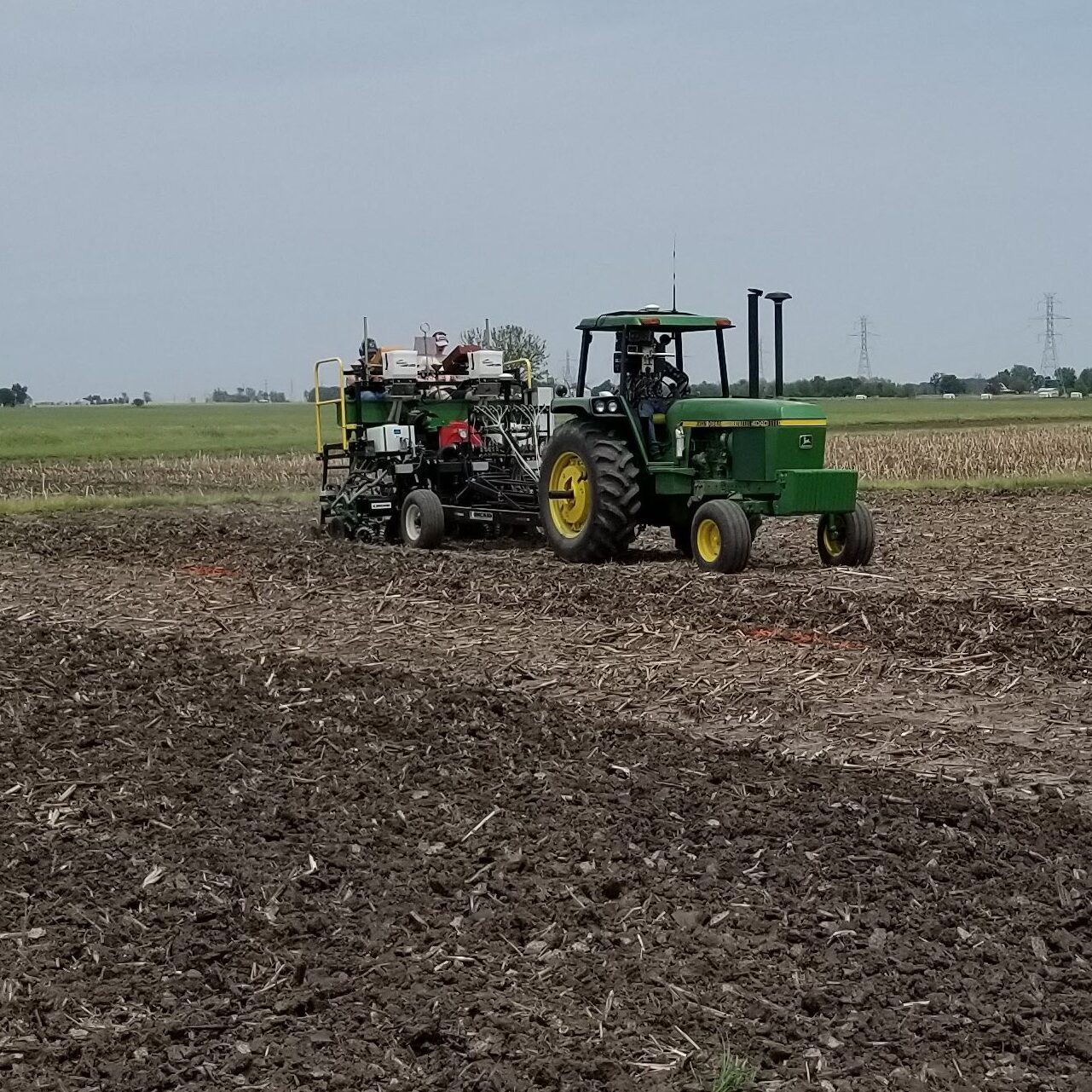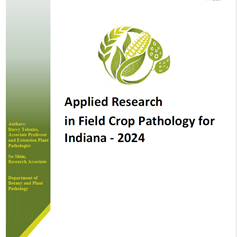Telenko Lab
Our research program focuses on promoting sustainable and economically sound disease management practices in Indiana field crops. We have an interdisciplinary plant pathology research and extension program involved in studying the biology and management of soilborne and foliar pathogens of agronomic crops.
CONTACT US
Department of Botany and Plant Pathology
dtelenko@purdue.edu
915 Mitch Daniels Blvd.
Lilly Hall Room 1-317
West Lafayette, IN 47907
Tel: 765-496-5168
Weekly Image Spotlight
IN-SEASON UPDATES AND FEATURED RESEARCH
Disease Update in Indiana Corn and Soybean
Tar spot map July 10, 2025.
It is important to continue to scout for diseases in both corn and soybeans to make informed management decisions.
Update on Disease Risk in Indiana Corn
Most corn fields I have been in this week are pretty clean. A few diseases that I have seen include anthracnose, tar spot, and common rust in corn. We are tracking the activity of tar spot (map-Figure 1) and southern
READ MORETar spot: What to Look for in Corn and Making an Informed Decision on Fungicide Application
Tar spot confirmed in our research plots in Indiana this week. Corn growth stages are quite variable across Indiana, but a number of areas with early planted corn are about knee high. I just scouted our research plots in northern
READ MOREPlease help with the 2025 Soybean Seedling and Stem Disease Survey
The Crop Protection Network (CPN) is a multi-state and international collaboration of Extension specialists and professionals, providing unbiased, research-based crop protection information. Our goal is to support professionals making informed decisions on soybean disease management. This survey is being conducted
READ MOREWhy all the fuss with the plant pathogen Fusarium graminearum?
Fusarium graminearum is a globally distributed plant pathogen capable of causing plant diseases, Fusarium head blight of wheat and small grains and Gibberella ear rot of corn are two diseases found in Indiana that are caused by this plant pathogen.
READ MORESome Quick Tips and Tools to Prepare for Tar Spot in Corn
I am already getting questions on tar spot management as we finish planting corn here in Indiana. Here’s the list of my 10 points after seven seasons of tar spot and few tips and tools to help make an informed
READ MOREScouting for Fusarium Head Blight (Scab) of Wheat and Things to Consider when Harvesting
Wheat has reached dough stage (Feekes 11.2) in our research plots in Southern Indiana. As we look to thinking about harvest it is time to check for Fusarium head blight (FHB) or scab. It is one of the most important
READ MOREThree New Tools Available to Help Make Informed Disease Management Decisions this Season
I am excited this season to be able to share three new tools from the Crop Protection Network. I strongly recommend you bookmark these on your favorite electronic device(s). These tools are from a culmination of a long-standing collaboration of
READ MOREFoliar Diseases of Wheat and Fusarium Head Blight (Scab) Management
It is time to keep an eye on wheat for diseases and scab risk. There are a number of foliar diseases in wheat to watch out for. These include – leaf, strip and stem (Fig. 1A,B,C), Septoria leaf spot and
READ MOREField Crop Disease Monitoring Resources for Indiana in 2025
There are a number of resources available for monitoring field crop diseases here in Indiana. The Purdue Field Crop Pathology Team will be tracking diseases across Indiana and will post updates here in Pest & Crop and on our website
READ MOREThe summary of the 2024 Applied Research in Field Crop Pathology Publication is Now Available!
https://indianafieldcroppathology.com/wp-content/uploads/2025/03/BP-Extension-Applied-Research-on-Field-Crop-Disease-2024.pdf
READ MOREBlack Soybeans in Indiana. What is causing it and the potential for reduced soybean seed quality.
Authors: Darcy Telenko, Shaun Casteel, John Bonkowski and Tom Creswell There have been many reports of black areas in soybean fields in Indiana this season. These areas have appeared after weather from hurricane Helene passed through the region. In the
READ MORE
